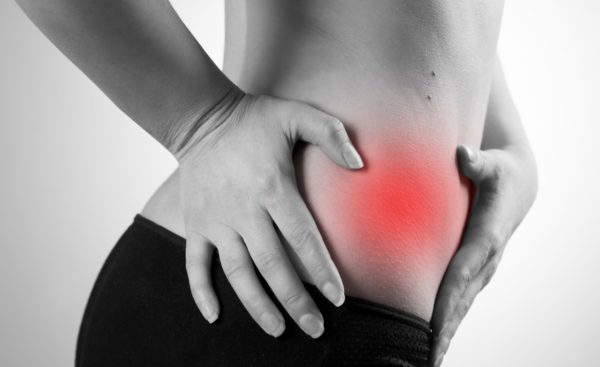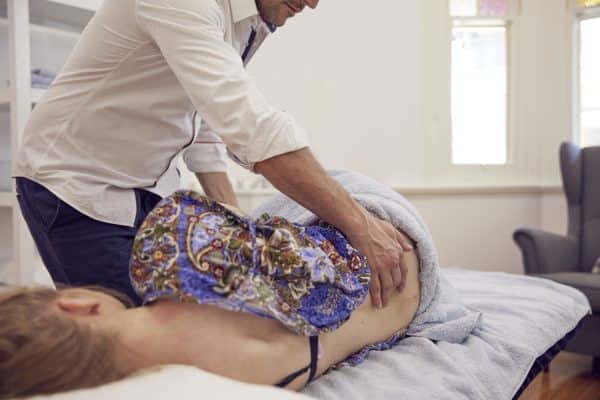Hip Pain is a common problem
The Hip Pain Problem
Do you have trouble sleeping or walking because of hip pain? Read on as Osteopath Eddie Clark discusses this inconvenient issue.

Hip pain is a very common condition
As an Osteopath, I see a large number of patients, both male and female, with quite painful and achy hips. I’m writing about this in the hope that I can reach some of these people suffering and show them there are real options for treatment. Many of them have tried a few things and been disappointed.
It seems to me to be a bit of a silent epidemic. It’s reported to affect between 10% and 25% of the general population! The worst of these problems seem to hit the middle-aged bracket, usually between about 35 and 60, but with a real spike in the over 50s.
These patients that I see are genuinely suffering and limited by the problem and don’t find much relief at all with the traditional anti-inflammatories and wait-and-see approach. It does not get to the root of the problem. GPs aren’t able to offer much more apart from a referral for a cortisone injection, which is often not effective or only effective for a short time. If you are going through this problem or know someone who is, Osteopathy can help. Read on for more information.
Hip pain is the cardinal symptom of a bunch of conditions variously called gluteal tendonitis, trochanteric pain syndrome, lateral hip bursitis, trochanteric bursitis, or hip abductor tendonitis. Research into the incidence of hip pain in the population reveals a higher percentage of female sufferers – as much as 4:1. This ratio is reflected in my patients too. Men do come in with hip issues, but most commonly they have a behavior like overdoing running on sloped ground or an underlying issue like arthritis. It is believed that the extra width in the female pelvis is to blame for this higher incidence. Hormonal changes around menopause also seem to predispose to tendon degenerative change.
One of the most frustrating things for sufferers is that the condition has a slow onset, and they cannot link the problem to any event like an injury or fall. But once the condition has set in, it often affects the person over months or even years, easing over periods of lower activity and flaring up straight away as they try to get on with their lives or renew an activity they love.
Now before you go diagnosing yourself from information you read in an article on the Internet, let me just say this: It is not always this problem causing hip pain. If you are suffering and want to find out what’s causing the problem, you need to see a professional like an Osteopath to help verify if you are suffering from one of these conditions. They can rule out other things and will also offer you treatment strategies.
Now that’s out of the way, let me get back to the point of this article. In my experience, this can be quite a debilitating condition for the sufferer. Because of the slow onset, by the time you have realized there is a significant issue, you are already experiencing daily pain that’s aggravated by walking, sitting, and even lying down!
Discomfort sleeping and ache or stiffness upon rising are the first things I will ask about with a new presentation of hip pain. They are a bit of a cardinal sign of this condition. It hurts to lie on the affected side, but it can even hurt to have it stretched when lying on the good side. A large number of people are affected bilaterally (affecting both sides), so it will hurt lying on either side regardless. This, of course, can make sleeping very difficult.
The pain is mostly around the sides of the hips but can exist over the buttocks too. It is usually a quite dull and aching pain in nature, but if someone prods around over the hip, you can usually find exquisitely painful areas to press. The pain can refer to the groin or down into the side of the leg as far as the knee and sometimes beyond.
About two-thirds of people suffering from it will have back pain or hip arthritis as well. These likely increase stress on the hip muscles and tissues.
Walking can be an issue with these hip problems. It can start out OK, but by the time the person is into their walk, they can experience an increase in pain, and over distance, the pain grows and becomes nagging. It can also lead to limping, sometimes quite noticeably.
When you combine this tendency to aggravate the condition by doing something as simple as walking with the potential for aggravation from sleeping postures, you can see how this condition can be very frustrating to deal with. It’s not uncommon for it to recur even after it has apparently resolved.

Osteopaths provide treatment for hip pain.
So if I’ve just described you or someone you care about, here is a breakdown of our suggestions on how to get rid of this troublesome problem.
First: Don’t despair. There are therapies that work well, but you need to recognize and accept it’s not a quick-fix condition. It will take effort and education to get better. But you will recover if you make the time to do your therapy and your rehabilitation exercises and be patient.
Second: Stop Stretching. Yes, you read that right. If it’s a true tendonitis issue, it might NOT benefit from stretching. This is believed to compress the irritated tendon, which can disturb the blood flow in a negative way for the healing tendon and exacerbate symptoms, prolonging the problem.
Third: Modifying your routine is absolutely essential. You must go easy on the hip as you are healing. Part of the education process you will go through is learning and accepting that the tissue in your hip is injured and might have been so for some time. It will need a controlled period of not being stirred up and then a deliberate and planned reintroduction of the activities you love but haven’t been able to do due to pain. This is called a graded reintroduction and will form the backbone of your rehabilitation. Around this plan, you can do anything that makes your hip or hips feel better. But you must strive to avoid, where possible, or at least limit things that make the pain worse.
Fourth: Get strong… Carefully. What shows up over and over in research into this condition is that careful strengthening programs work. They allow the tendon to heal properly and also increase the muscle and tissue conditioning of all the associated leg muscle groups. This makes the load on the hip more manageable and leads to less chance for relapse. But the difficulty is always in avoiding overdoing it. My advice is that this is where an Osteopath can be very useful. We can help in setting up a doable exercise routine that can be supervised at first but quickly progress to self-management once the symptoms show signs of improvement.
References: My references for this article come from a number of research articles on lateral hip pain syndromes and also from specialist podcasts and conference talks. More information can be gained by contacting the author at St. George Health.
If you would like to get some more information please call the clinic 02 9553 9823 or book online here:
Make an appointment.
Use our convenient online booking or contact us direct.
